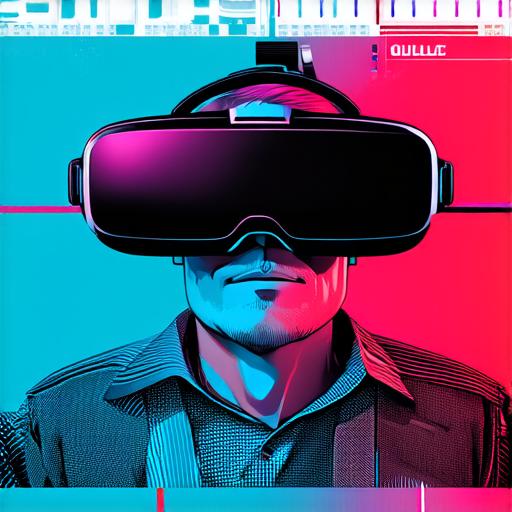The Early Days of Virtual Reality
One of the earliest recorded examples of a virtual reality experience dates back to the 15th century in China, when a Chinese monk named Haitong is said to have created an illusion of walking on water using mirrors. This technique was later used in Japanese Zen temples to create an immersive and meditative experience for visitors.
Another early example of VR technology can be traced back to the 16th century, when Italian artist Filippo Brunelleschi created a virtual tour of Florence using a series of paintings. The paintings were viewed through a special device that allowed viewers to experience the sights and sounds of the city as if they were actually there.
The Birth of Modern Virtual Reality
Modern VR technology began in earnest in the mid-20th century, with early experiments in creating immersive environments for military training purposes. In 1968, the US Army’s Advanced Research Projects Agency (ARPA) funded a project at the University of Utah to develop a VR headset that could be used for training soldiers in realistic simulations of battlefield situations.
The first commercially available VR system, known as the Sword of Damocles, was developed by Ivan Sutherland in 1968. The system consisted of a large, clunky headset and a series of wires that connected it to a computer. Users could look around in virtual space by moving their heads, but they had no control over their movements or actions within the virtual world.
In the 1970s, VR technology began to gain traction in other areas, including entertainment and education. In 1972, computer scientist Michael Noll created a simple VR system that allowed users to explore a virtual room using a head-mounted display (HMD) and a joystick controller.
The first commercially successful VR game, known as Spacewar!, was developed in the 1960s by Steve Russell at MIT. The game pitted two spaceships against each other in a virtual battlefield, and it quickly gained popularity among early adopters of VR technology.
The Rise of Consumer Virtual Reality
In the early 21st century, consumer VR technology began to take off, with the introduction of devices like the Oculus Rift and HTC Vive in 2012. These systems allowed users to experience virtual reality in their own homes, rather than in specialized labs or arcades.
The launch of the PlayStation VR in 2016 marked a major milestone in the consumer VR market, as it brought the technology to a wider audience and paved the way for the development of new games and experiences.
Virtual reality has since become an increasingly popular form of entertainment, with millions of people around the world using VR systems to play games, watch movies, and explore virtual worlds.
The Future of Virtual Reality
Virtual reality technology continues to evolve at a rapid pace, with new innovations emerging all the time. One of the most exciting developments in recent years has been the introduction of standalone VR systems, such as the Oculus Quest 2, which don’t require a separate computer or gaming console to work.
The rise of mobile VR technology has also made it easier for people to experience virtual reality on-the-go, using smartphones and tablets to access VR content from anywhere in the world.
FAQs
1. What is the history of virtual reality technology?
Virtual reality technology has its roots in ancient times, with examples dating back to the 15th century in China and Japan. Modern VR technology began in earnest in the mid-20th century, with early experiments in creating immersive environments for military training purposes. The first commercially available VR system, known as the Sword of Damocles, was developed by Ivan Sutherland in 1968.
2. What are some examples of early virtual reality experiences?
One of the earliest recorded examples of a virtual reality experience dates back to the 15th century in China, when a Chinese monk named Haitong is said to have created an illusion of walking on water using mirrors. In the 16th century, Italian artist Filippo Brunelleschi created a virtual tour of Florence using a series of paintings.

3. What are some examples of modern virtual reality technology?
Modern VR technology includes devices like the Oculus Rift and HTC Vive, which allow users to experience virtual reality in their own homes. The PlayStation VR is another example of consumer VR technology that has gained popularity in recent years.
4. What are some potential applications for virtual reality technology?
Virtual reality technology is being used in a variety of fields, including entertainment, education, healthcare, and training. For example, medical students are using VR simulations to practice surgeries, while astronauts are using VR technology to train for space travel.
5. What is the future of virtual reality technology?
Virtual reality technology continues to evolve at a rapid pace, with new innovations emerging all the time. One of the most exciting developments in recent years has been the introduction of standalone VR systems, such as the Oculus Quest 2, which don’t require a separate computer or gaming console to work. The rise of mobile VR technology is also making it easier for people to experience virtual reality on-the-go, using smartphones and tablets to access VR content from anywhere in the world.
